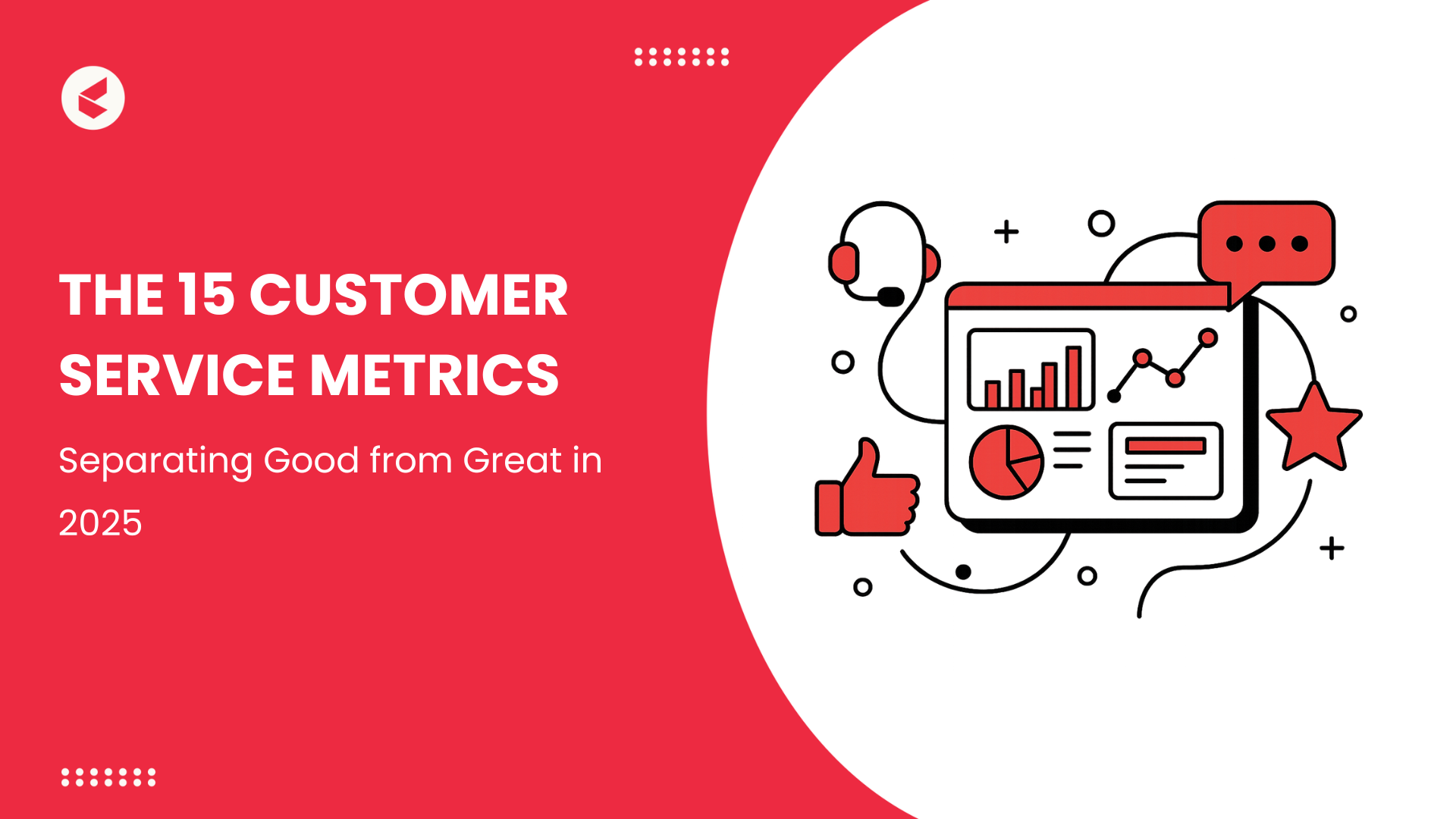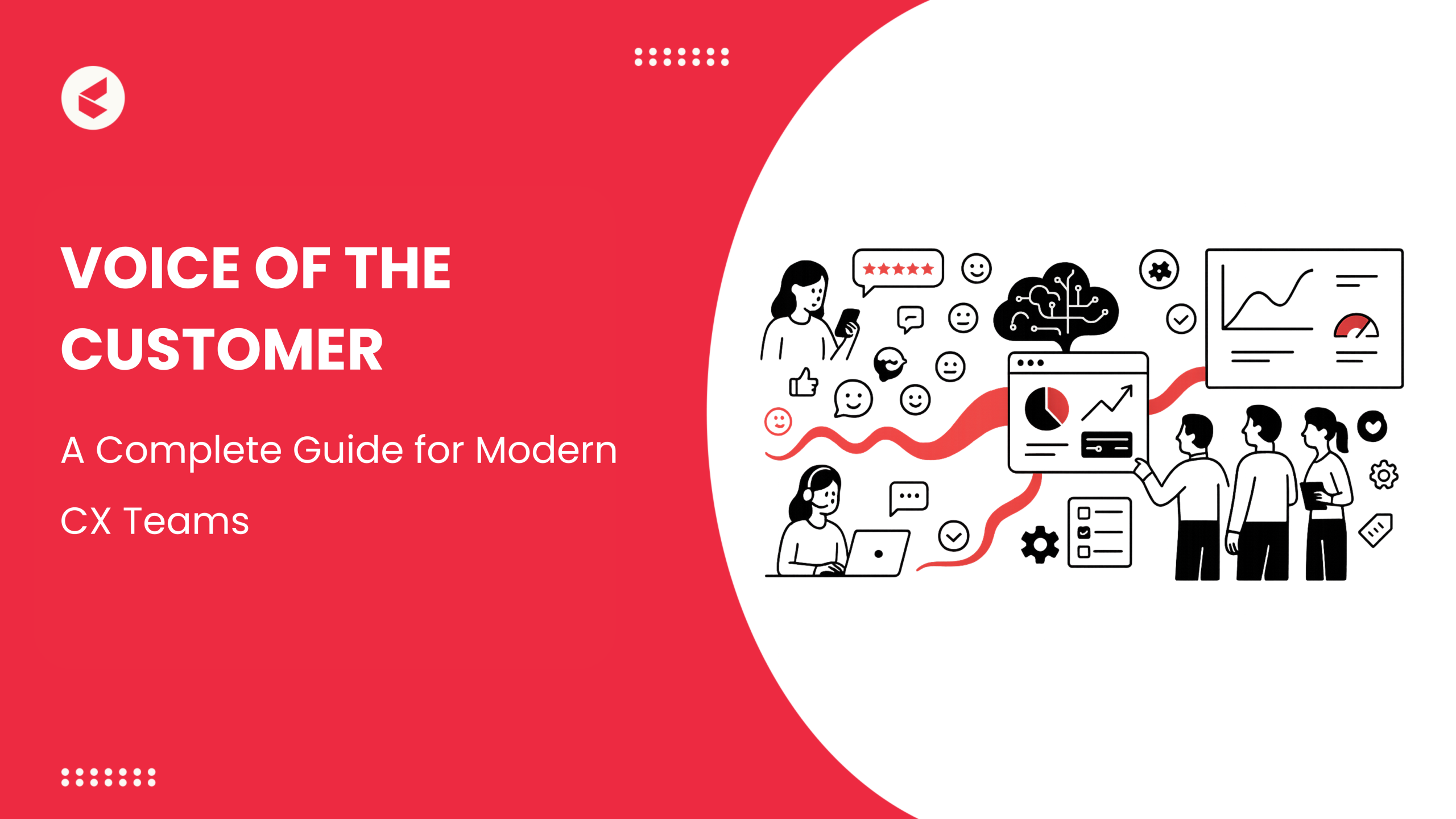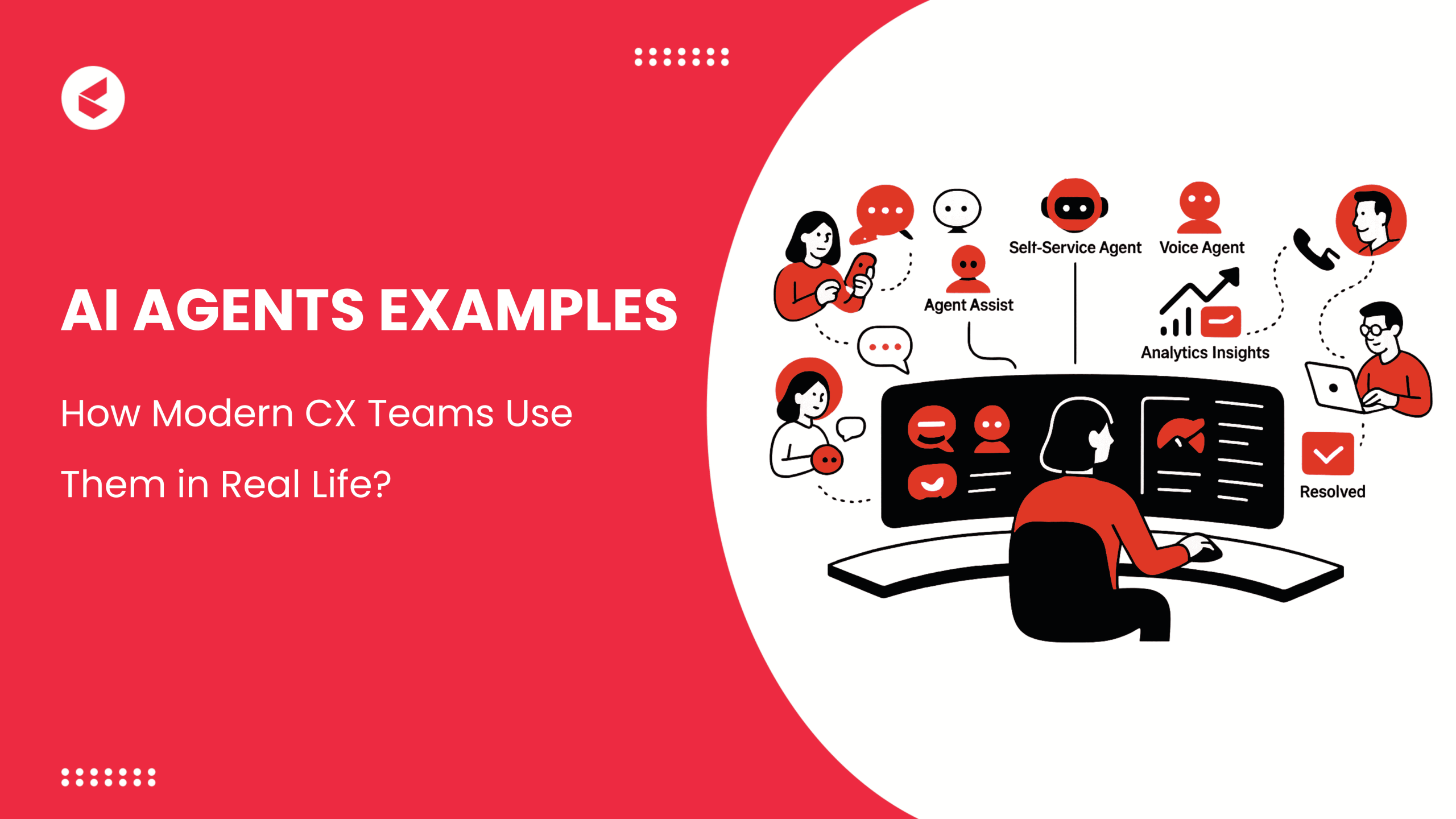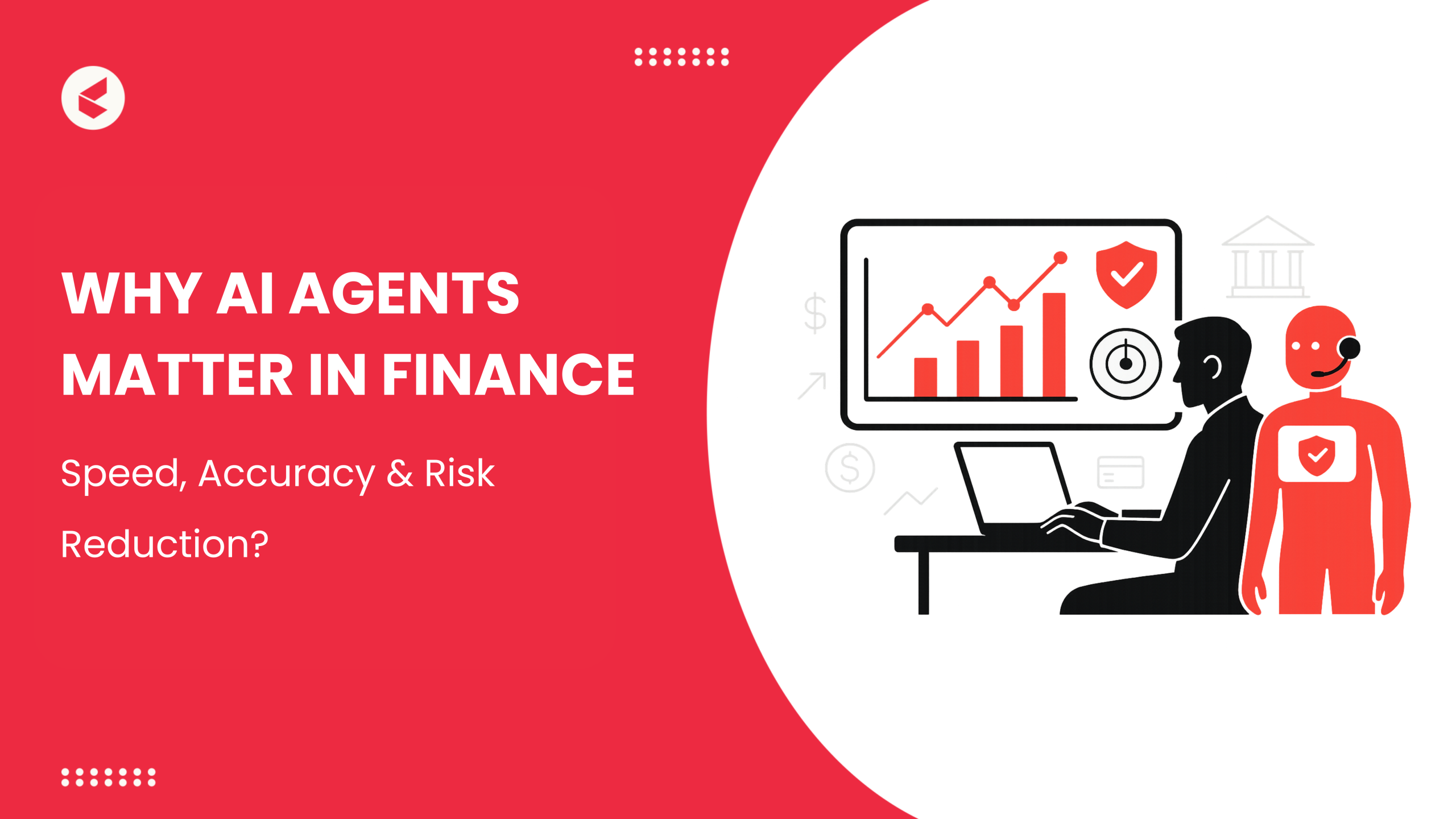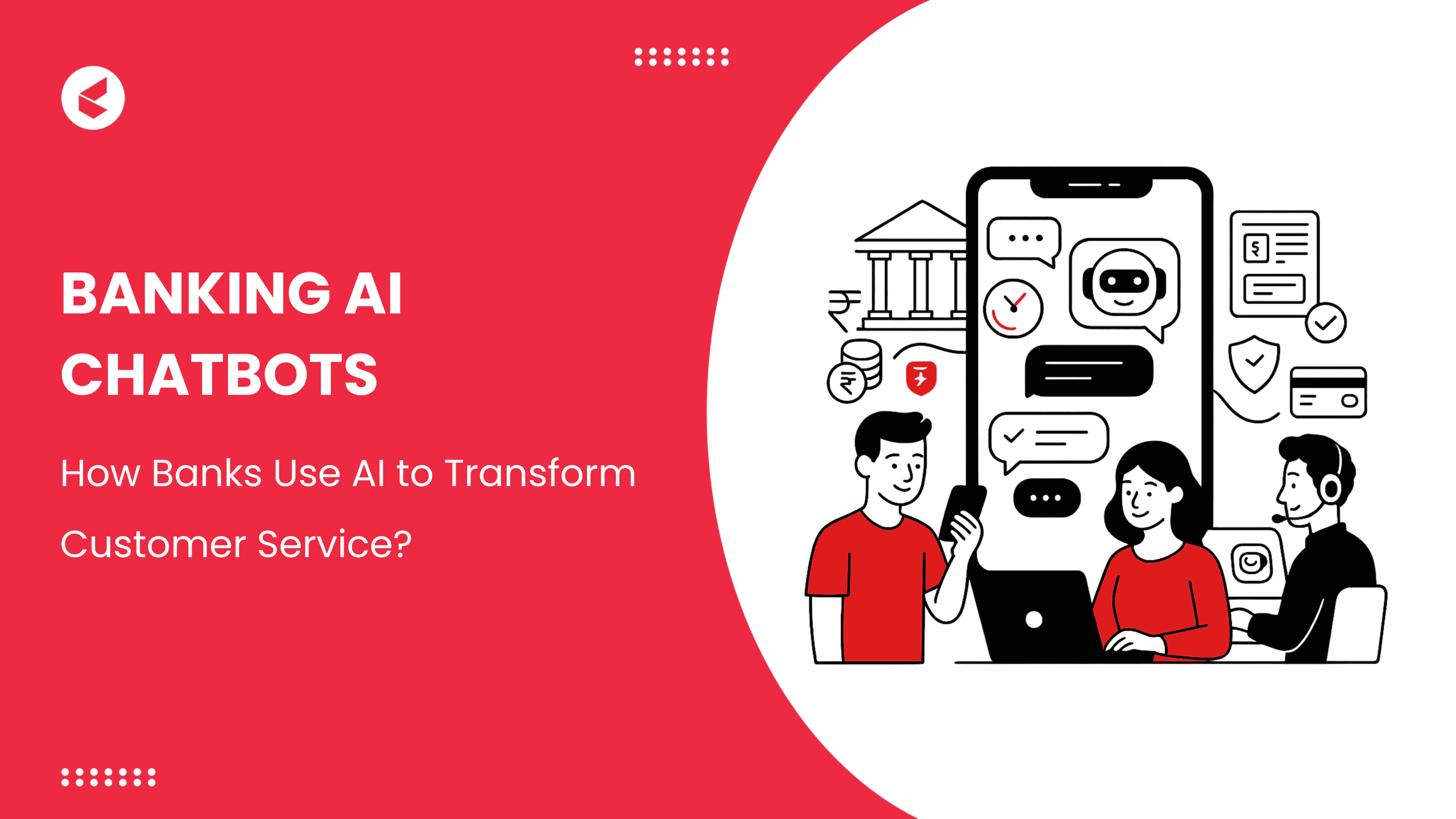The customer had waited too long. Again.
The agent was helpful, but the damage was done. A few clicks later, the subscription was canceled.
Moments like this happen every day, and most teams never find out why. They rely on instincts or outdated dashboards, hoping issues will surface before they spread. But without focused analytics, you don’t see the cracks forming until they break something big.
Support leaders today juggle rising volumes, tighter budgets, and mounting pressure to prove value to the business. And without credible reporting, the drive to perform turns into a cycle of trial and error.
Nearly three in four buyers say experience influences their choices just as much as price and quality (PwC). When your service indicators don’t match the reality customers face, churn creeps in and loyalty fades. Costs rise silently, and service improvements never gain momentum.
The right data brings those insights to light. This blog reveals 15 customer service metrics that help track real impact and turn support into a business advantage.
If you’re serious about service, it starts with what you measure.
Why Measuring Customer Service is Critical
Each metric uncovers a narrative about your team’s influence on business results. Poor measurement leads to guesswork. And guesswork breaks customer trust.
In contrast, accurate customer service metrics give you clear visibility into what’s helping or hurting your brand.
Companies that get CX right often see sales conversions jump by up to 20%, service costs drop by as much as half, and customer satisfaction climb significantly (McKinsey).
That’s not just good CX. That’s smart business.
Here’s why measuring customer service matters:
- Customer loyalty is delicate – 32% of customers discontinue their relationship with a favored brand following a single negative encounter (PwC).
- CX fosters distinction – In crowded markets, the quality of service frequently outweighs the significance of product features.
- Retention beats acquisition – Keeping a customer is five times cheaper than getting a new one (HBR).
- Data uncovers underlying issues – Without monitoring metrics such as Customer Satisfaction Score (CSAT), you end up addressing symptoms instead of the actual problems.
Real-time insights improve:
- Team performance – Spot bottlenecks, coach proactively, and manage workloads with agility.
- Customer experience – Understand when, where, and why satisfaction drops, and how to fix it.
- Strategic planning – Forecast resource needs, track long-term trends, and report business value.
You can’t control what you don’t measure. Metrics create accountability, enable faster decision-making, and help your team stay aligned with customer and business goals.
With AI-driven support, omnichannel expectations, and tighter customer loyalty trends shaping 2025, these customer service metrics take on new urgency—what you track now directly impacts your competitiveness in the year ahead.
How to Choose the Right Customer Service Metrics
Not all customer service performance metrics are created equal. The right metrics depend on your goals, team structure, and customer expectations.
Start by asking: What are you optimizing for—speed, satisfaction, efficiency, or retention? Then map your metrics accordingly.
1. Align Each Metric with a Specific Support Goal
- For faster response – Use First Response Time (FRT) and Average Handle Time (AHT).
- For happier customers – Track Customer Satisfaction Score (CSAT) and Net Promoter Score (NPS).
- For operational control – Monitor ticket volume and backlog rate.
2. Segment your Metrics into Three Categories
- Customer satisfaction metrics – Reflect how customers feel about your service. (e.g., CSAT, NPS)
- Performance metrics – Measure team efficiency and responsiveness. (e.g., FRT, AHT, resolution rates)
- Quality metrics – Assess the accuracy, completeness, and consistency of service. (e.g., QA scores, first contact resolution)
This framework helps you balance speed with quality without sacrificing customer trust.
For CX Leaders and Support Heads, Here’s How to Choose
- Start small. Focus on three to five metrics to reach your immediate goals.
- Be consistent. Regularly observe those indicators to recognize genuine trends instead of single variations.
- Skip the vanity metrics. A high number of resolved tickets doesn’t mean much if customer satisfaction is slipping.
- Bring in context. Pair your data with customer feedback to understand the “why” behind the numbers.
Metrics for customer service are not merely figures. They’re signals. The right ones help you prioritize actions that improve both the customer experience and your team’s impact.
Quick Reference – 15 Customer Service Metrics at a Glance
| Metric | What It Measures | Why It Matters | Where to Track It |
| Customer Satisfaction Score (CSAT) | Post-interaction satisfaction | Measures agent quality and support effectiveness | Surveys, helpdesk forms |
| Net Promoter Score (NPS) | Customer loyalty | Predicts retention and brand advocacy | Periodic email or in-app surveys |
| Customer Effort Score (CES) | Ease of issue resolution | Lower effort = higher loyalty | Exit surveys, chat transcripts |
| Customer Retention/Churn Rate | Account stickiness over time | Affects lifetime value and growth | CRM and billing systems |
| Online Reviews & Ratings | Public sentiment | Shapes brand perception and trust | Google, G2, Trustpilot |
| First Response Time (FRT) | Speed of first reply | Sets the tone for the experience | Ticketing dashboards |
| Average Handle Time (AHT) | Time to fully resolve an issue | Reflects agent productivity and efficiency | Support platform logs |
| First Contact Resolution (FCR) | One-touch ticket closures | Reduces repeat contacts and escalations | CRM and support logs |
| Ticket Volume & Backlog | Incoming and pending tickets | Tracks demand and team load | Helpdesk dashboards |
| Reopened Tickets | Repeat work on same issue | Flags quality gaps and follow-ups | Support analytics tools |
| Knowledge Base Deflection Rate | Tickets avoided via articles | Proves self-service effectiveness | Article views vs. tickets |
| Self-Service Usage Rate | Chatbot and FAQ engagement | Reduces human touchpoints and cost | Bot dashboards, FAQ traffic |
| Community Resolution Rate | Peer-to-peer answers resolved | Builds trust and scalability | Forum analytics |
| SLA Compliance Rate | % of SLAs met on time | Essential for B2B clients and trust | CX platforms, alerts |
| Cost per Ticket | Average resolution cost | Links support to profitability | Ops reports, finance tools |
Top 15 Customer Service Metrics
Numbers don’t lie. Here are the top 15 customer service performance metrics that show your service game.
A. Customer Satisfaction Metrics
These metrics unveil your customers’ genuine sentiments. They are going beyond scripts, resolution times, and superficial feedback.
1. Customer Satisfaction Score (CSAT)
What it measures
CSAT tells you how satisfied a customer is after a specific interaction or resolution.
Why it matters
This measure provides prompt insights into whether your team is fulfilling expectations. It serves as one of the most evident signs of support quality.
How to calculate it
Ask customers to assess their experience on a 1-5 scale. Then use this formula:
| (Number of positive responses ÷ Total responses) × 100 = CSAT% |
What action it drives
Use CSAT to spot service gaps and identify low-performing channels. A falling score can indicate friction points in the journey. Set team-level CSAT targets to drive accountability.
If scores rise after workflow changes, you know what’s working. CSAT is best tracked per interaction for tactical improvements, not long-term loyalty.
2. Net Promoter Score (NPS)
What it measures
NPS measures customer loyalty over time. It assesses the probability of recurring transactions or suggestions.
Why it matters
It assists in knowing how probable it is for customers to suggest your brand, a crucial indicator of growth and loyalty.
How to calculate it
Ask: “How likely are you to recommend us to a friend or colleague?” on a 0–10 scale.
Promoters (9–10), Passives (7–8), Detractors (0–6).
| NPS = %Promoters – %Detractors |
What action it drives
A low NPS might suggest more significant issues with your overall experience. To uncover the root causes, segment the market by product line or geographic area. Make modifications according to the qualitative feedback given by detractors.
Monitor the impact of support interactions on NPS over an extended period. To illustrate the impact on business, correlate NPS trends with revenue trends.
3. Customer Effort Score (CES)
What it measures
CES measures the ease with which customers can address a problem or receive assistance.
Why it matters
Customers are more likely to leave after high-effort experiences.
How to calculate it
Ask right after support interactions: “How easy was it to resolve your issue?” Typically rated on a 1–7 scale.
Lower scores mean more effort, which is a red flag.
What action it drives
A low CES can point to broken workflows or unclear self-service paths. Use it to fine-tune knowledge base articles and handover processes.
Analyze CES trends by ticket type or channel. Make changes that reduce effort, like faster responses or fewer escalations. CES is especially valuable for digital-first support models.
4. Customer Retention Rate / Churn Rate
What it measures
These metrics monitor the number of customers who remain with your company and those who depart over time.
Why it matters
Retention has a direct effect on revenue. Retaining current clients is more economical than finding new ones.
How to calculate it
Retention Rate
| ((Customers at end of period – New customers) ÷ Customers at start) × 100 |
Churn Rate
| (Customers lost ÷ Customers at start of period) × 100 |
What action it drives
Assess if unresolved tickets or poor satisfaction ratings reflect support trends among churned customers. Analyze churn alongside NPS to reveal deeper trends.
To swiftly identify at-risk accounts and initiate an outreach, use retention data. Even slight improvements in retention can significantly affect revenue for subscription companies.
5. Online Reviews & Ratings (Trustpilot, G2, Google, etc.)
What it measures
Public customer sentiment across third-party platforms. It reflects both individual support experiences and brand reputation.
Why it matters
Reviews shape perception. Prospects often read reviews before choosing a product or service.
How to calculate it
Monitor average star ratings and review volumes across key platforms. Categorize reviews by theme, sentiment, and timestamp. Use social listening tools to track trends.
What action it drives
Use reviews to identify top support concerns. Negative patterns, such as repeated comments about rude agents or long hold times, warrant immediate action.
Positive reviews highlight what’s working. Encourage satisfied customers to leave reviews post-resolution. Ratings also impact SEO and brand trust, especially for B2C support teams.
To make the most of these insights, complement your review analysis with an SEO audit checklist and advanced link-building strategies to boost your website authority, search rankings, and overall customer satisfaction. You can implement these initiatives in-house or by partnering with a reliable link-building agency.
B. Operational & Agent Performance Metrics
These metrics spotlight how fast and effective your support team really is.
1. First Response Time (FRT)
What it measures
FRT tracks the time between when a customer submits a query and when your team first responds.
Why it matters
Speed shapes perception. A fast first reply builds trust even before the issue is solved. Slow FRT increases frustration.
How to calculate it
| FRT = Time of first agent response – Time of customer ticket submission |
Track this for each channel: chat, email, or social media.
What action it drives
A high FRT signals resource issues or poor prioritization. You can improve it by:
- Routing tickets more efficiently
- Using AI or chatbots for basic triage
- Staffing based on peak hours
Monitoring FRT by channel also helps optimize your support mix. Customers expect different speeds from email vs. live chat. Set FRT goals by tier or issue type for smarter resource use.
2. Average Handle Time (AHT)
What it measures
AHT calculates the typical duration needed to address a customer problem, encompassing conversation duration and post-call activities.
Why it matters
It reveals how efficient your agents are. AHT also helps forecast staffing needs and manage queue lengths.
How to calculate it
| AHT = (Total time spent on interactions + After-call work) ÷ Number of resolved tickets |
What action it drives
Don’t aim for the lowest AHT. Instead, target the right balance between speed and quality.
Should AHT be elevated, look into:
- Tasks that can be automated and are performed repeatedly
- Lack of agent training or poor documentation
If it’s too low, check if agents are rushing and sacrificing service quality. AHT paired with CSAT offers a clearer performance picture.
3. First Contact Resolution (FCR)
What it measures
FCR indicates how many problems are fixed on the initial contact with a client without requiring additional follow-up.
Why it matters
Customers favor immediate replies instead of lengthy exchanges. A high FCR increases loyalty and decreases friction.
How to calculate it
| FCR = (Tickets resolved in first contact ÷ Total tickets) × 100 |
You can track this via your CRM or agent notes.
What action it drives
Low FCR? It might signify:
- Agents do not possess the power or resources to address problems
- Knowledge base content is outdated or missing
- Customers are directed to incorrect channels
Invest in training and update help articles. Empower agents to handle more queries on the spot. FCR also helps reduce ticket volume, making your team more scalable.
4. Ticket Volume & Backlog
What it measures
Ticket volume shows how many support requests you’re getting. Backlog tracks how many remain unresolved over time.
Why it matters
It provides immediate insight into team workload and assists in avoiding customer dissatisfaction from accumulating.
How to calculate it
Track total new tickets, resolved tickets, and unresolved tickets daily.
| Backlog = Total unresolved tickets at any given time |
What action it drives
Spikes in volume could signal product bugs or seasonal surges. Backlogs show capacity gaps or workflow inefficiencies. Use these metrics for customer service to:
- Forecast staffing needs
- Improve self-service adoption
- Address urgent inquiries
By observing backlog trends, you can swiftly identify burnout issues. It also assists in guaranteeing that Service Level Agreements (SLAs) are fulfilled punctually.
5. Reopened Tickets or Follow-Up Interactions
What it measures
This tracks how often a resolved ticket is reopened or requires additional agent action.
Why it matters
Reopened tickets usually mean incomplete resolutions. They waste time, increase costs, and damage trust.
How to collect or calculate it
| Reopen Rate = (Number of reopened tickets ÷ Total resolved tickets) × 100 |
You can log this automatically within most support CRMs.
What actions it drives
A high reopen rate signals poor-quality resolutions. Dig deeper by:
- Reviewing agent responses
- Identifying product issues causing repeat queries
- Adding follow-up automation for complex cases
Also, track which categories or agents see more reopenings. Then, coach agents or refine resolution protocols accordingly. This measurement, combined with FCR, provides a strong perspective on support quality.
C. Self-Service & Support Efficiency Metrics
When done right, self-service becomes your 24/7 silent agent, scaling support without scaling cost.
1. Knowledge Base Deflection Rate
What it measures
This measures the frequency with which customers discover answers in your knowledge base rather than reaching out to support.
Why it matters
A strong knowledge base reduces tickets and helps customers solve simple issues quickly.
How to calculate it
| Deflection Rate = (Total article views – Support tickets from those views) ÷ Total article views × 100 |
You’ll need to track ticket creation paths and associate them with article views.
What action it drives
A low deflection rate means your content isn’t working. Check if articles are:
- Hard to find
- Poorly written
- Outdated
You can improve deflection by updating popular articles, adding FAQs, and optimizing search. Also, monitor what content customers engage with, but still escalate. This customer service metric helps you prioritize high-impact content updates that actually reduce ticket volume.
| How to track it: Use analytics tools like Google Analytics, your knowledge base platform’s built-in analytics, or CX software reporting dashboards to monitor article views, search terms, and user paths. Comparing these with ticket creation data will help you accurately calculate and validate your deflection rate. |
2. Self-Service Usage Rate
What it measures
This demonstrates how often customers use resources like help widgets and FAQs to find answers.
Why it matters
High usage signals that customers trust your self-service tools. It shows that they’re finding them accessible and helpful.
How to calculate it
Track total chatbot sessions, FAQ views, and self-serve interactions.
| Usage Rate = (Total self-service interactions ÷ Total customer interactions) × 100 |
What action it drives
If usage is low, your self-service tools may be buried, unresponsive, or not intuitive. Boost usage by:
- Simplifying UI
- Using proactive chatbot prompts
- Linking relevant articles in your ticketing workflows
Usage trends help you identify which content or flows need refinement. The goal isn’t just engagement; it’s resolution without agent involvement.
3. Community Resolution Rate
What it measures
This measures the proportion of customer problems addressed via peer-to-peer forums.
Why it matters
Your power users often have the answers. A high resolution rate reflects strong community trust and reduces load on your team.
How to calculate it
| Community Resolution Rate = (Number of resolved community questions ÷ Total community questions) × 100 |
Mark resolutions with “Accepted Answers” or by using upvotes, based on the platform.
What action it drives
Encourage agents or moderators to validate correct answers. Spotlight active contributors to drive participation.
A low resolution rate suggests that threads are going unanswered, or the community needs better structure. Invest in community health, gamification, or AI suggestions. You’ll free up your support team while building customer engagement.
4. SLA Compliance Rate
What it measures
This measure demonstrates how regularly your team satisfies the response and resolution times specified in the Service Level Agreements (SLAs).
Why it matters
SLA performance directly impacts customer trust and account health, especially for B2B or premium accounts.
How to calculate it
| SLA Compliance = (Tickets resolved within SLA ÷ Total tickets with SLA) × 100 |
Track it by ticket priority, channel, and team.
What action it drives
Falling below SLA targets? Investigate ticket routing, agent availability, or triage protocols. Use alerts for nearing SLA deadlines to prioritize work.
Also, track SLA breaches by customer type or issue category. Consistent compliance boosts credibility and helps you retain key accounts.
5. Cost per Ticket
What it measures
Cost per ticket tells you how much you spend, on average, handling a single customer issue.
Why it matters
It links support performance to business outcomes. Lower cost per ticket with high CSAT means your team is efficient and effective.
How to calculate it
| Cost per Ticket = (Total support costs ÷ Total tickets resolved) |
Include salaries, tools, training, and infrastructure.
What action it drives
Use this to optimize your support model. Rising costs might mean:
- Low FCR
- Inefficient workflows
- High training needs
Introduce automation or self-service to reduce cost. Segment costs by channel or tier to see where your money’s going.
Tracking this metric regularly makes sure your support function stays scalable without sacrificing quality.
How to Measure and Monitor These Metrics
Measuring customer service metrics is only useful if you do it consistently and correctly. You need the right tools and visibility.
Start by using platforms that centralize customer interactions. Most of your metrics, like FRT and FCR, can be tracked through your ticketing system or CX platform. Tools like survey plugins help you gather CSAT and CES through post-interaction feedback.
To make data actionable:
- Set internal benchmarks – Use historical trends to set targets per team or channel.
- Use dashboards – Create role-specific dashboards for team leads and agents. Make performance visible.
- Review monthly – Don’t just set and forget. Review metrics monthly to identify patterns or anomalies.
- Automate where possible – Auto-collect survey data. Auto-tag reopened tickets. Auto-flag SLA breaches.
- Enable instant alerts – Trigger alerts when FRT spikes or when ticket backlog exceeds limits.
Tools like Kapture CX streamline this entire process. With built-in survey forms, automation, and intelligent dashboards, you get real-time visibility and control. No more manual data pulls or spreadsheets.
Efficient tracking doesn’t just help your team perform; it helps you prove value to the business. When you can link rising NPS to lower churn, or reduced AHT to lower cost per ticket, your metrics become growth levers.
Final Thoughts: Turn Metrics into Momentum
Customer service metrics serve as your daily guide for performance and development. The correct KPIs highlight areas where customers face challenges, where agents excel, and where your operations require adjustments.
However, monitoring is just a portion of the process. True influence arises from transforming insights into action.
That’s the point at which a platform such as Kapture CX stands out. It provides you with real-time insights across agents and channels. Utilizing intelligent features such as SLA notifications and automated ticket distribution, Kapture enables you to transition from reactive solutions to proactive superiority.
Begin by identifying your key 3–5 metrics, establishing definitive baselines and tracking trends. In 2025, customer service performance metrics will go beyond tracking—they will be the competitive edge that distinguishes brands delivering exceptional CX from those struggling to keep up in an evolving market.
Ready to turn your metrics into momentum? Book your free demo with Kapture CX today!
FAQs
Review your KPIs every month. A weekly review can provide useful insights. However, monthly analysis typically reveals clearer patterns and facilitates better strategic choices.
Choose measures that are in line with your company’s goals: cost, speed, loyalty, or satisfaction. Focus on those that most significantly influence customer results.
You can, but it’s labour-intensive and prone to mistakes. CX solutions give real-time insights that boost productivity, automate data collection, and eliminate guessing.
